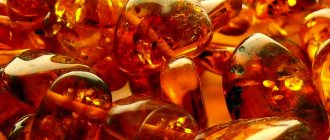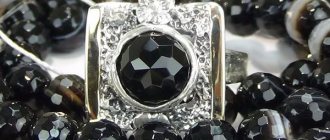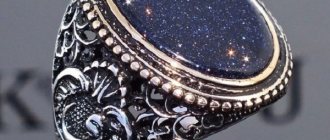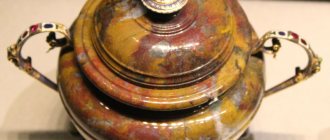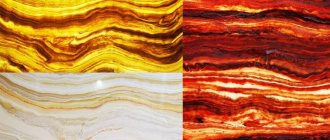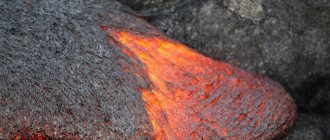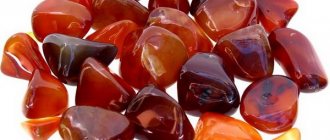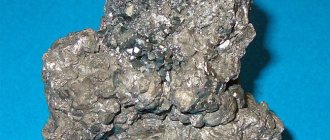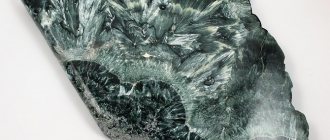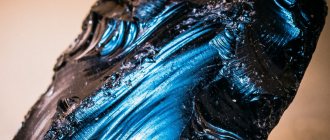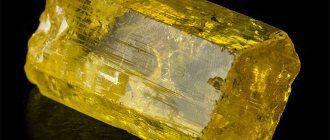About amber
Amber is a fossilized pine resin that is between 100,000 and several million years old. This is a fossil substance of organic origin, which, under the influence of the environment, has become denser over the years and lost volatile substances, as a result of which today we can enjoy jewelry and decorative items made of bright and pleasant to the touch amber.
Baltic amber
WHERE DOES AMBER COME FROM?
Natural amber, which is currently mined, was formed mainly in Primorye and accounts for 80% of all world production.
About 90% of the stones in the world's amber deposits are ornamental and semi-precious, suitable for jewelry.
The coastal regions of the Baltic states are considered the birthplace of amber: minerals are best preserved in salt water.
We recommend: Where on Earth IS AMBER MINED?
The benefits of amber deposits for science
- Drops of the resin-like substance from which amber is obtained fall from trees into bodies of water. This is how transparent “pure” amber appears.
- As the resin moves along the trunk, or already during the flight, small insects, plant debris, pebbles or soil particles get into it.
- In the frozen resin, not only small particles, air bubbles and insects are found, but also quite large living creatures.
- One of the most valuable finds are stones with lizards, toads and other amphibians trapped inside.
- A unique find - a prehistoric bird chick - gave scientists a chance to better study the fauna of this period.
- The age of amber is determined by carbon analysis, so it is possible to trace the evolution of some species, as well as study other indicators: for example, the composition of air and soil.
- Amber cannot be strictly classified as a mineral, but its extraction is regulated by the state and constitutes a significant share of the capital of some countries.
Blue amber
The stones are valuable for science: DNA can be extracted from the inclusion remains and the appearance of the ancient inhabitants of our planet can be modeled.
Where is amber found?
The exact reserves of amber in the world are still unknown.
- Interesting fact: one half of the Baltic field is located in the Kaliningrad region, and the other half is in underground formations in Poland.
- Russian amber is represented by finds from the Baltic states and the Far Eastern region. The gem is also found on Lake Baikal, but less frequently.
- “Tears of pines” are also mined in large quantities in the Dominican Republic.
- There are much smaller deposits of amber in Thailand, Japan, Burma, Indonesia, Mexico, America and Canada.
- In Europe, “tears of pine trees” are found in France, Italy, Romania and Ukraine.
- In Ukraine, the minerals are called “burshtyn” (in German - birstein), which means “burning stone”. Indeed, if you bring the mineral to a flame, you can smell the resin of pine needles.
The largest gems are found in Burma, and the Baltic coast leads in terms of production volume.
Amber in Burma
Characteristics of the stone
The name of the stone Amber is of Lithuanian origin. In other languages it was called differently. In French it is "Ambre", derived from the Arabic "anbar". In German it is “berstein”, which means “flammable stone”. The name passed into the Polish, Ukrainian and Belarusian languages, sounds like “burshtyn”. The ancient Greeks called the gem “electron”.
Amber is a mineral without a crystalline structure, classified as a natural resin. It consists of organic acids, oils, interspersed with sulfur, nitrogen, silicon, iron, aluminum and other chemical elements. The stone contains about 8% succinic acid, which is extracted and used industrially.
Description of the properties of natural amber and its physical characteristics:
- Color. The stone has a wide range of colors, there are more than 300 shades, most of them are in the yellow-brown spectrum.
- Hardness – 3-4 points on the Mohs scale.
- Density - 0.97 - 1.11 g/cmᶾ
- Transparency can be full, medium, there are opaque samples.
- There are no lines or cleavages.
- The fracture is conchoidal, viscous.
- Waxy shine.
- The structure is amorphous, in the form of a complex polymer.
- The absorption spectrum is not interpreted
- Luminescence ranges from blue and white to yellow and green.
An important property of the material is its ability to burn; it ignites even from a match. Amber powder is used in aromatic mixtures and in church censers. It was this stone that was first discovered to have the ability to become electrified. The words “electron” and “electricity” come precisely from the Greek name for amber.
Facts: from Lomonosov to Putin
Lomonosov proved the plant origin of the sunstone: “Amber is a product of the plant kingdom. Anyone who does not accept clear evidence of this kind should listen to what the worms and other reptiles included in the amber say...”
The stone is “afraid” of any chemical influences and should be washed exclusively with running water.
In ancient Rome, to give the stone a red color, it was boiled in honey.
Amber is used not only in pharmaceuticals and jewelry; it is used in various techniques (including in the form of varnish) as an electrical insulator.
Before the New Year V.V. Putin signed a decree criminalizing illegal mining of jade, amber and other semi-precious stones. But the law applies only to those who have previously been subject to administrative penalties for such “pranks.”
Amber can “retain” light, and after walking in the sun wearing jewelry with amber, the stone becomes brighter. However, direct exposure to sunlight is destructive to it.
Which one is most valued?
Amber is rightfully considered one of the most popular jewelry and ornamental stones, known to man since ancient times.
White (Royal), green, blue, landscape. It acquired such shades from the influence of external factors. They are rare, so they are considered the most valuable.
How to distinguish real amber and check for authenticity at home (without special equipment)
Real amber or not real - the question is not just complicated, but even baffling. The Kaliningrad region contains more than 90% of the world's amber reserves. There is so much of it here that jewelers do not experience any difficulties in obtaining raw materials. It never occurred to any of them to make fakes and sell them. Firstly, this is reputation, and secondly, the Assay Office constantly monitors and records the craftsmen; no excesses with counterfeit products have been recorded so far.
Usually the untreated side is left in the product. As a rule, it will be negotiable. But this is not always done, because there are beautiful stones that you want to show from all sides.
Related material:
What amber products can be bought in Kaliningrad.
Ultraviolet
If you shine ultraviolet light on it, the amber will glow with a greenish-light green hue. No plastic or any other material will give such a color. By the way, in some cases, miners shine a light underwater to the bottom of the sea; in the sand and natural debris, it immediately becomes clear where it lies.
The directed rays of an ultraviolet lamp give the stone a greenish tint.
Remember, the stone will be heterogeneous in structure, there will always be some kind of picture, bubbles, multi-colored spectra in it. The fake will not turn out as flawless as nature and natural processes came up with.
Pressed amber will also glow, but in normal light it will have a homogeneous structure visible. The stripes will be uniform, the pattern will be the same when pressed. For example, beads from the press are all the same color, with an almost unchanged internal and external pattern. They are homogeneous. The lines run predictably, not chaotically.
Reference. An amber press is cheaper than products made from whole raw materials.
Natural amber balls will look approximately the same color, but if you look at them, you will see that their patterns are different. There may be dark small dots (so-called “pepper”). This indicates that the ball is made from a whole piece.
How to distinguish amber from a fake or artificial stone in a store
There are no fake ambers in Kaliningrad stores, so buy with peace of mind. This is simply not needed by anyone.
At the same time, there are a lot of tips on the Internet for checking authenticity:
- cauterize,
- scratch,
- rub,
- throw into salt water, etc.
How do you imagine this process? Come to the company store with a can of water and a pack of salt. Place it all on the counter. Ask the seller: “Please give me those beads for 50 thousand rubles. I want to check whether they are real or not by dipping them in a salt solution,” or: “Show me a necklace for 35 thousand” - do you take it, scratch it, rub it, and then burn it with a lighter? This is unthinkable!
If you want to buy an expensive amber item, but you don’t understand it and doubt its authenticity, there is a more effective way.
Visit the Amber Museum, where complete information about the stone is presented: from quarry to production. Read about properties, shades, processing. There is plenty of material. You can also ask your questions in the comments under this article.
If you rub regular amber with your finger, it will smell like pine needles. What is considered artificial? I would like to warn some inquisitive people. This is a very soft stone, any attempts at mechanical impact (scratching with a key, rubbing against clothing from buttons and zippers, as well as any type of impact with foreign objects) can cause damage. You should not do this, because you can ruin an expensive product. Such precedents have happened; people paid for a broken product because of their stupidity.
Reference. In 2010, a visitor to the Amber World store decided to check the authenticity of a “Bouquet of Roses” product in the form of a brooch. The buds were made of white amber. The buds flew off as a result of mechanical impacts. The product was damaged, he had to pay for the damaged item.
Keep in mind that brooches and pendants are polished, shaped and processed. How do you imagine testing the product? Scratch something from your pocket? Reading reviews about pressed amber, I want to ask those who wrote this - people, do you know that pressed amber is already more expensive than regular amber in some respects? What could he be more beautiful? What if an ignorant person can’t tell the difference between amber and rosin? Of course, everyone gives out advice.
The main difference between pressed amber and ordinary amber is that pressed amber is the processing of natural stone in special autoclaves, where, under temperature and pressure, a new one is created from it, with certain characteristics necessary for the master to realize the idea. But it still remains amber. In some cases, the pressed one can be more beautiful, at a cost 3-4 times lower than its analogue. This has to do with processing. If usually, in order to obtain a stone with the desired characteristics, you need to process it, spend a lot of effort and money, then with pressing everything is much simpler.
Attention! Do not buy products anywhere, in the backstreets, from random people. Only in stores or workshops. When purchasing a product, you should be given a receipt and consulted on the product, this is exactly the same as in any jewelry store.
It is worth adding that there cannot be artificial amber, only artificial processing of natural stone, which in some cases increases its cost.
Look at inexpensive products in several places, hold them in your hands, take a closer look, study the color scheme. After this, you will understand how to choose what you like. As a rule, there should be no doubt.
All branded stores sell only real products. There can be no fakes there. After all, this is the reputation of a store, craftsman or factory. Each product has its own tag. Products are certified.
How amber is mined and processed
The main extraction of amber is carried out in Russia - the country supplies up to 90% to the world market. A large deposit is located in the Kaliningrad region, where up to 300 tons of stone are mined per year. Small deposits have been discovered in Siberia, the Urals, and Sakhalin.
The Baltic countries have large reserves of amber. The main country producing it is Lithuania. The Baltic mineral is recognized as one of the highest quality.
In Ukraine, stone mining is carried out in the amber triangle with an area of more than 200 km2, which includes Rivne, Volyn, Kyiv, and Zhytomyr regions. Estimated reserves are about 1.5 thousand tons.
There are several amber deposits around the world that are of interest for development. They are located in the territories:
- Burma;
- Dominican Republic;
- Indonesia;
- America.
Amber is extracted in 2 ways:
- A powerful stream of water erodes the earth, which supposedly contains gems. This is an industrial method.
- Search in coastal waters. Many professional rock catchers go out to sea in diving suits immediately after a storm or during high waves.
Amber processing includes:
- Rip off. The stone is subjected to rough initial grinding.
- Open it up. The mineral is sawn into blanks.
- Molding. The blanks are given specific shapes.
- Grinding. The resulting figures, beads and other products are processed until they have a smooth surface.
- Polishing. The final stage gives the finished product a smooth finish.
Due to its fragility, the mineral is difficult to cut; it is mainly processed as a cabochon.
To impart transparency and change the yellow color to cherry, calcination is used. Minerals are immersed in sea sand and heated to a temperature of 200 °C. This kind of amber is called “hot” amber.
Large gems are rare, small stones are usually found. They are collected and pressed, resulting in large pieces of mineral. This is molded amber.
You can search for sunstone on your own on the shores of the Baltic Sea. Tips on how to find amber:
- waves throw up stones after a storm;
- you need to look not on the beach, but in heaps of algae;
- when it is windy, you can search in the coastal vegetation.
Found stones can be processed independently at home. Stages:
- Sanding with coarse sandpaper and a file. It's worth starting from the transparent side.
- The future product is given shape. The stone is wrapped in cloth, clamped in a vice and cut with a jigsaw or hacksaw.
- Sand with medium-sized sandpaper, then fine. They work without pressure.
- Polish the product with a piece of felt, felt or flannel. Before this, a couple of drops of odorless vegetable oil or GOI paste are applied to it.
Watch the program about stone mining:
How to care for amber
Amber does not like direct sunlight. Therefore, many people store amber jewelry in boxes.
- Do not rub with rough surfaces, as this will cause the stone to lose its shine. It is necessary to avoid mechanical influences, rubbing, wiping at home, attempts to polish, and so on. Only a master can do this.
- Do not use chemicals; they will not add beauty to the stone, but will only worsen it.
- It is necessary to remove products before showering and bathing, avoid contact with perfume, and do not wash in hot water.
All these measures will allow you to preserve the product for a long time in its original form.
How to clean amber beads if they have been lying around for a long time without proper care. How to restore shine?
There is only one recipe - give it to a master for polishing. Do not invent or invent any actions. Only a master knows how to restore the shine to amber.
Can amber beads crack on top?
They cannot unless mechanical influence is exerted on them. Amber is a very delicate stone and must be handled with care. Amber beads should be stored separately from other jewelry.
You won’t be able to clean them from clouding at home - it’s impossible. Some people confuse natural aging with loss of polish. Polishing is just an action on the top or outside of the product. The entire stone ages. This is a natural and normal process.
Composition and structure of amber
The composition and structure of amber is currently being determined. Its volatile part (about 10% of its weight) has been known for a long time. These are aromatic compounds - terpeps with 10 carbon atoms and sesquiterpenes with 15 carbon atoms in the molecule. These compounds are found in significant quantities in turpentine. Succinoabietinolic acid (C25H40O4) with two OH groups (one carboxyl) was isolated from the non-volatile residue of amber back in the 30s. As later mass spectrometric studies showed, amber contains more than 40 compounds. Many of them are still unknown. In pure form, only abietic acid and its isomers have been isolated from amber: levopimaric, palustrinic, neoabietic, dextropimaric and isodextropimaric acids. The first four acids form a chemically related group; they differ from each other only in the position of the double bonds, which are easily displaced within both rings. Abietic acid is the most stable. This is the only material that ancient fossil resins usually consist of. New data on the structure of amber were obtained using gas and thin layer chromatography. The following acids are found in amber: dehydroabietic acid, isodex-tronimaric acid, dehydroisonimaric acid, sandaraconimaric acid, digatenic acid and abietic acid. They make up the part (20-25%) of Baltic stone that is soluble in organic solvents. The amber residue, insoluble in any known solvent, was called succinine by the German scientist I. Ioon back in 1816. IR spectrometry data showed that succinine contains lactone (ester) groups, i.e. it is an ester. How did the transformation of abietic acid into an ester occur and how did the alcoholic function of the amber molecule arise? The action of sunlight played a prominent role in this process. Thus, if a solution of abietic acid is exposed to ultraviolet irradiation for a long time, formic acid and dehydroabiene, a compound with an extracyclic double bond, are formed in it. Let us add that absorption bands characteristic of an off-cyclic double bond are found in the spectra of many ambers. Under the influence of water, the double bond gives rise to an alcohol group, which further participates in the formation of an ester.
One thing should be noted. Using a mass spectrometer, the molecular mass of the compounds isolated from the insoluble residue of amber was determined to be 604. This is twice the mass of abietic acid. This means that it is not abietic acid that participates in the formation of esters, but its dimer. This assumption has been confirmed experimentally: multi-day ultraviolet irradiation of amber promotes the formation of a compound, completely insoluble in organic solvents, with a molecular weight of 604. The melting point of the crude and purified diabietic acid obtained in this way is equal to 365 and 390 ° C, respectively, i.e., it coincides well with the point melting of the insoluble residue of amber - succinine (365 ° C). According to the above, it consists of three groups of compounds:
- volatile terpenes and sesquiterpenes,
- soluble organic acids
- insoluble polyesters of these acids with alcohols formed from the same acids. The first two groups of compounds were contained in resin (resin) that flowed from pine trees in long-gone eras. The third group is a product of various transformations of the original resin
Disclosure of the secret of amber allows us to hope that in the near future it will be possible to obtain synthetic amber in approximately the same way as polymers are obtained in those days. Currently, synthetic products with the structure of abietic acid have already been patented abroad (but not yet produced). Amber is a high-molecular compound of organic acids containing on average 79% carbon, 10.5% hydrogen, 10.5% oxygen. Its formula is C10H16O4. 100 g of amber contains 81 g of carbon, 7.3 g of hydrogen, 6.34 g of oxygen, some sulfur, nitrogen and minerals. Quantitative relationships between individual elements in amber are subject to fluctuations. They are not constant not only for one deposit or manifestation, but even for the amber of one piece. The variability of its composition does not allow it to be classified as a mineral. The term “amber” should be considered collective for a number of fossil resins. A typical representative of this series is succinite. It is usually identified with a high-quality stone. The elemental composition of unaltered amber from the Beach area of the Primorsky and Klesovsky deposits, amber occurrences in the Carpathians and Ciscarpathia is close. The average contents of the main components (C and H) are respectively 80.78 and 10.12; 78.05 and 9.55; 79.68 and 10.07; 78.26 and 9.99%. Ukrainian amber contains up to 3.19% sulfur, which reduces the ornamental qualities of the stone. After burning amber, ash remains. The ash content of Baltic succinite is small - 0.2%, bastard and bone - 0.8%. The ash content of Ukrainian (Klesovsky) amber reaches 8.7%. A significant amount of ash in them indicates a noticeable content of mechanical impurities of mineral substances. During the weathering process, amber becomes more oxygenated, and the content of other components decreases.
In the form of impurities (from traces to 3%), 24 chemical elements (Y, V, Mn, Cu, Ti, Zr, Al, Si, Mg, Ca, Fe, Nb, P, Pb, Zn, Cr, Ba, Co, Na, Sr, Si, Sn, Mo, Yb). Of these, 17 were found in unaltered amber from the Klesovskoe deposit, 12 - in amber from the Beach area of the Primorskoe deposit, 11 and 13 - respectively, in amber from the Curonian Spit and Ciscarpathia. The smallest amount of chemical elements is found in transparent amber. Of the listed elements, Al, Si, Ti, Ca, Fe, Mg, Cu are constantly present in the weathered ones - only the first five elements.
Types of painting
There are primary and secondary colors. Primary coloring is determined by three factors: structural, scattering of white light in amber, various inclusions; secondary - by the processes of weathering of amber. The structural factor is the main one. Thus, the yellow color characteristic of amber is caused by the C=O group, which occupies a certain position in the amber molecule. Yellow amber has a rich range of shades, with golden amber being especially prominent. Variations in color and the combination of different shades of yellow in one piece depend on the initial composition of the resin, the subsequent conditions of its burial and transformation. This, as well as the mechanical admixture of pyrite, explains the green tints in amber. The unusual composition of resin is also responsible for the red color of Ukrainian amber. The blue color (from pale and sky blue to cornflower blue) is caused by the scattering of white light in a medium with small particles, which is amber. The appearance of pink color should be associated with different oxygen regimes during the transformation of the resin into amber. Under reducing conditions, green ambers could form, and with an increase in the partial pressure of oxygen, a pink color could form. Of the foreign substances that play the role of chromophores, it should be noted, first of all, ferric iron ions. They contribute to the appearance of a greenish-yellow color. White ones with a bluish tint have an increased amount of titanium. In some cases, the color depends on the significant admixture of certain minerals. White and gray colors are due to pelitomorphic calcite, green - pyrite, gray - clay minerals, reddish - minerals similar in composition to goethite and hematite. Amber acquires brown and black colors due to its significant content of dark bituminous substance or brown plant residues. During the weathering process, amber, as a rule, acquires a more intense (reddish-brown, brownish) color. Color is the standard of value. It has been valued differently at different times. In ancient Rome, white and waxy amber were used only for incense. Reddish transparent amber had a significant value. At the beginning of our era, two varieties of amber were valued - boiled in honey and golden transparent.
In the countries of the East, along with yellow transparent pieces, milky-white cloudy amber, containing a high amount of succinic acid, was valued; healing properties were attributed to them. Translucent ambers with a greenish tint were considered expensive. Nowadays, the highest quality amber should be lemon yellow and evenly translucent throughout the entire mass of the piece. When you look at the color scheme of amber, it becomes clear why in the distant past amber played the role of an exchange coin. It is valued not only for the variety of its characteristic golden shades, but also for its transparency, purity, and light transmittance. Pliny the Elder considered transparency the most valuable property, the brilliance of which should be such that, looking at a piece, “a person sees the reflection of the fire, and not the fire itself.” The degree of transparency of the stone varies from completely transparent to opaque. Transparency depends on the presence of voids - air bubbles, on characteristic structures, color, mechanical impurities of other substances and on other factors. Transparent straw-yellow amber either contains no bubbles at all, or the bubbles are so large that they have virtually no effect on transparency. In translucent amber, bubbles occupy up to 30% of the volume of the piece. In opaque amber, the bubbles are the smallest (0.001-0.1 mm), they make up up to 50% of the volume of the piece. Zones enriched with inclusions of various sizes form whimsical patterns. In irregular pieces with a rough crust left here and there, dull on top and sparkling below, these patterns, together with natural inclusions, create original visual images. Either, like fog at dawn, a light haze floats, and a thin golden stripe creates the impression of a flaming sunset, then you can discern the foamy ribbon of the surf, it is just as gentle. These unique paintings awaken the imagination of the artist armed with a chisel. The artist tries not only not to violate them in his products, but to further strengthen and emphasize what was inherent and unsaid in the amber by nature. This is how amazingly beautiful jewelry is born, in which it is by no means a piece of inanimate nature, but a gem filled with inner content. In the process of processing the Baltic mineral, it is practiced to divide it into grades depending on color, transparency and ability to be polished:
- The batter is transparent, with a characteristic amber color ranging from almost colorless to dark brown. Valued for its transparency and beautiful color, it is easy to polish;
- translucent (smoky) - slightly clouded with air bubbles with transparent gaps, from yellow to dark yellow, less often red and even more rarely blue, easily polished;
- bastard - characterized by medium transparency and heterogeneous yellow color with dark spots, easy to polish;
- bone - opaque, white, similar to ivory, few shades, polished;
- red - opaque, not polished;
- layered - white, not polished;
- foamy - opaque, white, in appearance little like amber, its color and structure resemble frozen foam. This is the most porous, and therefore the lightest type of amber; due to its porosity, it cannot be polished;
- dirty - gray to black, opaque, not polished;
- overburden - red, with a thick oxidation crust, translucent, poorly polished.
This division is to some extent arbitrary, since one piece of amber can combine different varieties. Recently, scientists using an electron microscope discovered in opaque amber many characteristic (granular, spheroidal) structures with a diameter of 7 nm or less, located randomly or in a certain order. There are very few such structures in translucent amber. In a piece of amber, the transparent side is usually the one that was facing the sun in the primeval forest. Due to uneven heating of different parts of the resin, its transparency decreases from the outer parts to the inner ones. Therefore, the transitions from transparent amber to bone amber through smoky amber and bastard become clear. They can be observed even in one piece. The transparency of the stone decreases if it contains pieces of conifer bark, wood dust, other plant debris, as well as lumps of dirt carried into the resin by the wind or the paws of insects. The transparency of amber changes noticeably during the process of weathering (oxidation). In this case, the surface of the transparent pieces becomes cloudy and turns into a brown crust, spreading to a depth of 3 mm. Small pieces of amber, oxidizing at full capacity, become completely opaque. Amber can be cleared and painted in various colors. Cloud amber has long been clarified by boiling in linseed and rapeseed oil. Pliny the Elder recommended taking the fat of a young pig for this purpose. When boiled, the bubbles in the amber filled with fat and acquired the ability to transmit light. Even in the last century, glasses, prisms, magnifying and burning glasses were made from enlightened amber. With the help of the latter, gunpowder flared up faster than with glass lenses. As a result of clearing, semicircular cracks often appear in amber, resembling fish scales in appearance. Amber processing craftsmen call these cracks, shining with “gold,” “sun rays.” Cloudy amber is also clarified using dry calcination - heating pieces of amber in sand at temperatures above 100 ° C. The ability of amber to be colored was known to Pliny the Elder. According to him, the Romans knew a way to color amber red. Using the root of Anchusa tinctoria, sea purple and goat's fat, they gave amber the appearance of a precious stone and valued it worth its weight in gold.
History of the amber stone
As archaeological finds by scientists have shown, the sunstone amber was processed by people who inhabited our planet back in Neolithic times.
The archives of the British Museum contain documentary evidence that this material was actively used as early as the tenth century BC.
It is known, for example, that the nobility of ancient Rome preferred various luxury items with amber inlay.
Amber stone: who suits it according to their zodiac sign
According to astrologers, amber is a solar stone that is most suitable for people born under the signs of the element of Fire.
For Leo, Aries and Sagittarius, it will be the best choice, enhancing the positive qualities inherent in them. Such a talisman can protect against damage and the evil eye, significantly increase intuitive abilities and give even more vitality.
Signs of Water and Air can safely wear amber and enjoy its support. For these signs it will also become a symbol of health and happiness.
But this stone is not suitable for Taurus at all. Nobody forbids Taurus to wear amber jewelry, but this will not be of any benefit. It may also happen that people born under this sign will become excessively irritable and will not be able to concentrate on important moments in life. They can become lazy and apathetic, like other Earth signs.
However, there is another opinion, according to which the Zodiac Signs do not matter at all when choosing an amulet.
Amber has such powerful energy that it can choose its owner.
If this is not your stone, then you will definitely feel it yourself and will not wear such jewelry.
The healing properties of amber
The healing properties of amber have been known to people for a very long time. Even ancient healers believed that this gem could cure any disease and improve human health. Modern lipotherapists agree with ancient practices and actively use this stone in medicine.
Amber is very useful for the thyroid gland, as it contains iodine, which is useful in the treatment and prevention of diseases of this organ. In addition, it has a positive effect on metabolism, which helps normalize weight. This will also be facilitated by the property of the stone to cleanse the body of slagging.
Succinic acid, which is a natural biostimulant, and crumbs are used to prepare medications that are indicated for colds and diseases of the respiratory system.
Even the smoke that is released during combustion is recognized as beneficial. With its help you can cure cough and alleviate the condition of asthma patients. And if you smoke tobacco using an amber mouthpiece, you can reduce the harmful effects on the body.
Amber relieves inflammation and has a bactericidal effect. It can relieve toothache and joint pain. And if you apply pieces of it to your temples, your headache will go away.
You will improve the functioning of your heart and blood vessels. Amber will help get rid of stress and will be useful in the treatment and prevention of cancer. It is used to treat skin diseases and strengthen teeth.
By learning the healing properties of amber and who can benefit from wearing it, you can improve your health and get rid of many problems.
